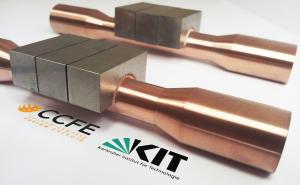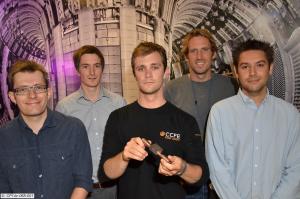Hi-tech Brillo pads answering a hot fusion problem
The divertor surface will be dotted with thousands of small tungsten blocks, forming the divertor targets. Millimetres below these targets, a water coolant flow removes the waste heat and regulates the divertor's temperature, and so the structural integrity of these components is critical. Damage to the coolant pipe will mean the coolant leaks out and the whole reactor has to shut down for costly repairs. So Tom and his colleagues' job is to find a way of separating the very hot tungsten (1,500 degrees C) from the not-quite-so-hot cooling water (a mere 200 degrees C). One idea is to focus on the so-called 'interlayer' between the tungsten armour and cooling structure.
"We think the layer between the two surfaces has to be spongey, but also act as a thermal barrier as well as survive the high heat flux," Tom explains. "From our analysis it looks like a good material for the job is a kind of felt made from copper — a bit like a Brillo pad you'd use to clean your dishes."



